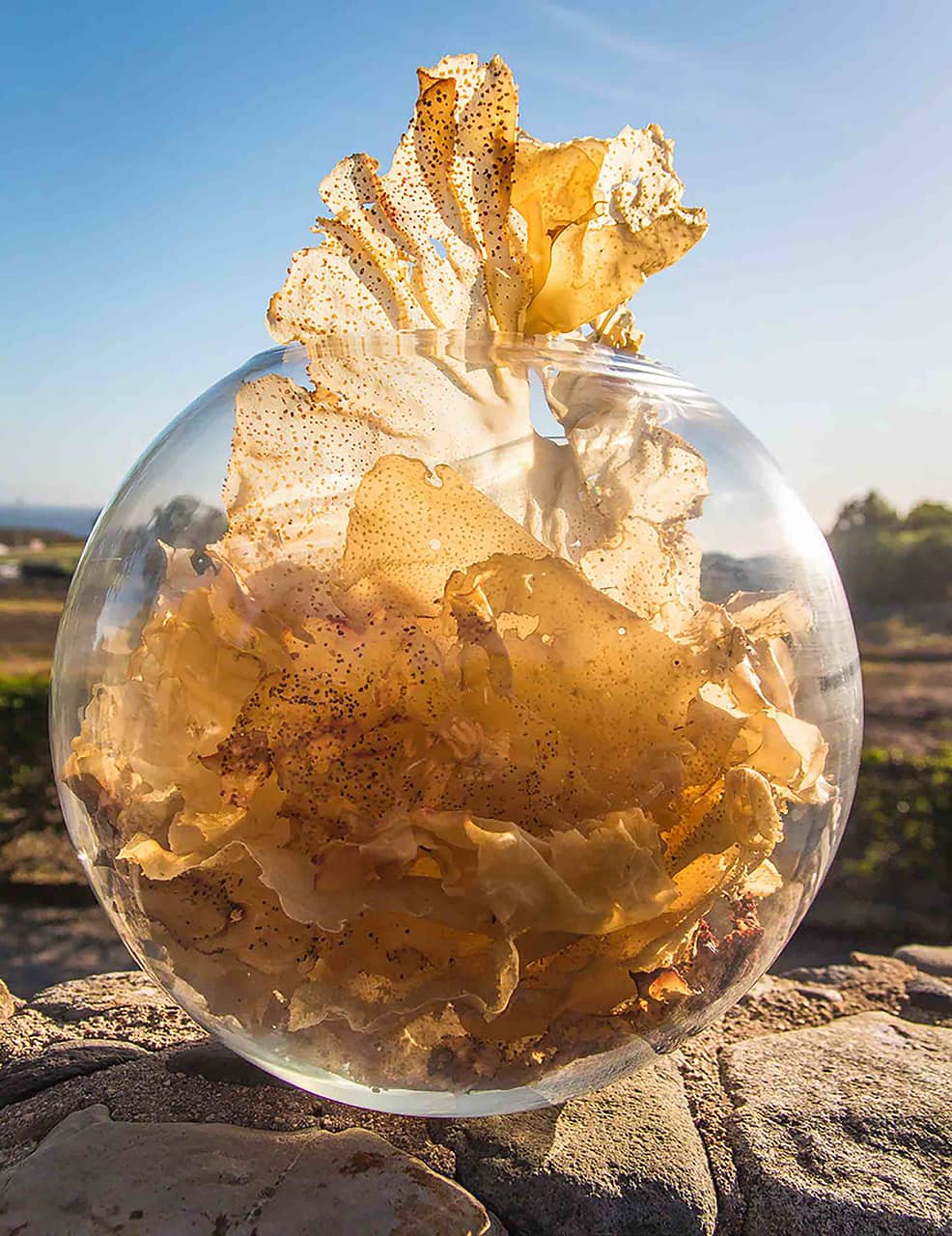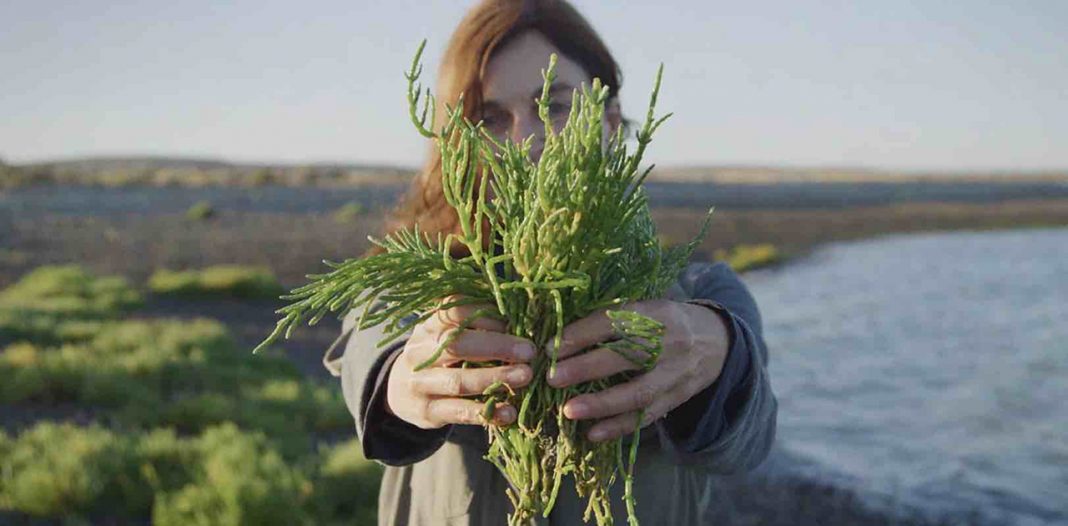Featured Image:
In 2005 OSEA founder Jenefer Palmer began sourcing seaweed from a sustainable farm in southern Patagonia.
Translucent strips undulate in an underwater dance, swaying to the movement of the waves, in shades of green, brown, red, blue—the colors of earth and sky. And why shouldn’t seaweed in all its many beautiful shapes and colors represent the earth’s palette under the sea?
Seaweed grows in shallow water and deep, in rivers and lakes, though the seaweed popular in skin care always comes from the sea. Anchored to the ocean floor by holdfasts, similar to roots, some stalks can grow more than 150 feet long. Even though seaweed looks like a plant, it is actually a substrata of the macroalgae family, which has three subgroups: brown algae (Phaeophyta), green algae (Chlorophyta), and red algae (Rhodophyta).
There is blue seaweed, but it isn’t really blue. That’s an optical illusion occurring with a type of seaweed known as Chondrus crispus, or Irish moss, whose protective cuticle coating has
tips that can reflect and bend blue and UV light to create an iridescent bluish color.
Like plants, seaweed uses chlorophyll for photosynthesis and features plant-like cell walls. But technically, it’s not a plant, because it does not have an internal vascular system and does not produce seeds or flowers.
Anyway, what’s in a name? For divers, snorkelers, and swimmers, the ceaseless swaying motion is a great beauty to behold. But seaweed not only looks beautiful; it is one of the healthiest plants on the planet and highly beneficial to the skin and overall health. Ancient cultures, from the Romans to the Japanese, appreciated the healing powers of a good soak in mineral-rich waters. But it was the French who created an entirely new science out of bathing in seawater with the invention of thalassotherapy in Brittany in the 19th century.
Thalassotherapy is the use of seaweed and seawater for healing, and it is still extremely popular in spas and wellness resorts around the world. French researchers discovered that seaweed and ocean water contain the same trace elements and minerals as human blood plasma. These absorb through the skin to stimulate the circulatory, lymphatic, and immune systems. Thalassotherapy clinics rely on a treatment menu that includes ocean mud baths, warm soaks in seawater, steam, and more, but there are strict rules. An official thalassotherapy spa, for example, can’t be farther than 1,000 meters (approximately half a mile) from the sea. The best seaweed is sourced in cold waters off the coast of Patagonia, Brittany, Scotland, and more.
Here, seaweed lovers and their stories.
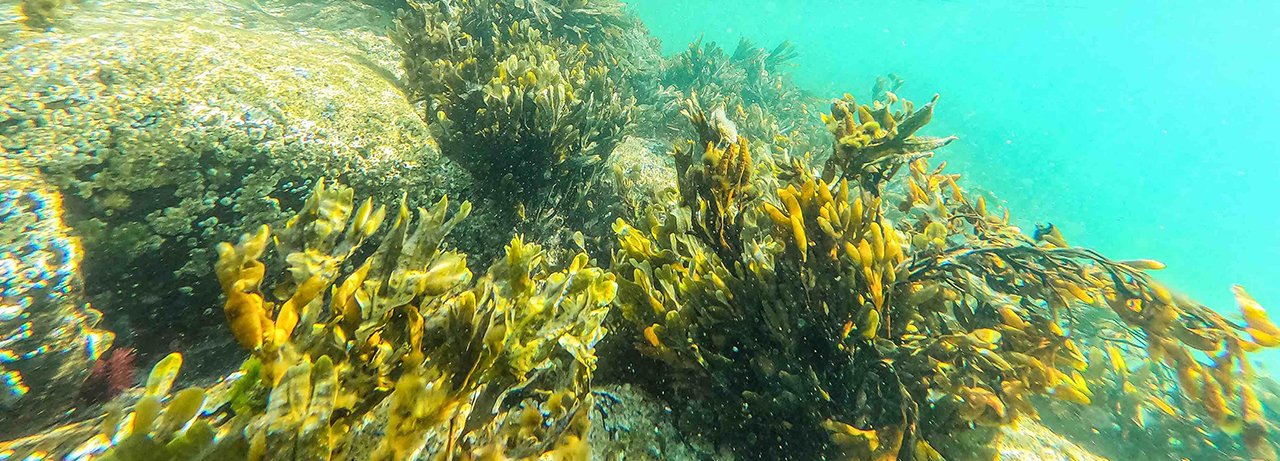
ISHGA
Outer Hebrides, Scotland
You don’t have to be a fan of Outlander to find romance in the mystical legends and lore of Scotland. But if you are, you’ll be happy to learn that the Callanish Stones—older than Stonehenge and the inspiration for the Craigh na Dun stones that Claire Frasier time-travels through—are just a few miles from where Ishga, a gorgeous Scottish seaweed-based skincare brand, is made.
The history of Ishga, like that of Scotland, is linked to the supernatural. Storm kelpies (known in Gaelic as Na Fir Ghorma) were said to inhabit a passage known as the Minch (Sruth nam Fear Gorm, or the Stream of the Blue Men) that lay between the Outer Hebrides to the west and mainland Scotland and the Inner Hebrides to the east. The Blue Men were not nice fellows, and it was said that they would search for sailors to drown and floundering boats to sink. They were thought to be especially active near the Shiant Islands in the Outer Hebrides near the Isle of Lewis, precisely where Ishga sources its seaweed. In fact, Stewart Hill of Ishga says, “our entire team is a Gaelic-speaking part of the culture where these stories come from.”
The Scots have a history of harvesting seaweed. “It has long been used medicinally, since it can be applied topically to treat burned or damaged skin, accelerate healing, and reduce infection and scarring,” says Hill. “Back then nobody knew about active ingredients, only that it worked.”
Ishga relies on a family spring that goes back generations, and the spring water is an integral part of the brand. In fact, when asked how important water is to the uniqueness and effectiveness of Ishga skincare, Hill says, “It’s everything. Ishga is literally just an Anglified phonetic spelling of the Scottish Gaelic word for water, uisge.
“In local folklore, our spring has always been said to have healing and therapeutic properties, long before skin care was a thing,” says Hill. “It’s always been a very spiritual place.” Scientifically, he explains, it is a highly nutrient- and mineral-rich source of water that’s taken thousands of years to carve its way through granite bedrock. “From an environmental perspective, we’re using fresh water that otherwise runs down into the ocean, so there’s no negative impact on the natural resources.”
Ishga’s seaweed is also harvested sustainably so that it can quickly grow back. No plants are harmed or damaged, Hill says. “Depending on the type of seaweed, we have both a floating platform, like a small ocean-going harvester, and good old manual labor: young Ishga staff who go out into the waves and tidal areas to cut the seaweed with handheld scythes.” The skin-regenerative properties of this seaweed are what inspired Ishga to bring these benefits to others.
In addition to the spring, Ishga uses seawater in its products. “The pristine quality of these sources is the basis for all our seaweed products,” Hill says. The brand harvests several different types of seaweed with names that are bound to make you smile: Knotted Wrack
(Ascophyllum nodosum), Toothed Wrack (Fucus serratus extract), Bladder Wrack (Fucus vesiculosus), and Channelled Wrack (Pelvetia canaliculata).
“Seaweed is one of the world’s most naturally abundant sources of vitamins, minerals, amino acids, antioxidants, and essential fatty acids,” says Hill. “Our seaweed delivers skin-renewing properties that are anti-aging. The active ingredients can reduce inflammation and even prevent hair loss. Oh, and you can put it in your salad—the seaweed, if you have it, not our skin care!”
Indeed, why not? Edible seaweed has been popular in Scotland and in other cuisines around the world. (Who doesn’t love sushi?) It is an excellent source of iodine, which supports the thyroid, and also contains vitamin K, B vitamins, zinc and iron, antioxidants that protect cells from free-radical damage, and micronutrients including folate, calcium, magnesium, and selenium.
Hill explains that like many other old culinary practices around the world, eating seaweed became less popular in the past century as people moved from rural land-based lifestyles to cities. But historically, it was part of the Scottish diet, especially in the islands and coastal areas. “I can certainly remember my grandmother talking about eating it,” he says. And now, “recent interest in traditional foods and local sourcing have led to it being more available on the menus of creative Scottish chefs.”
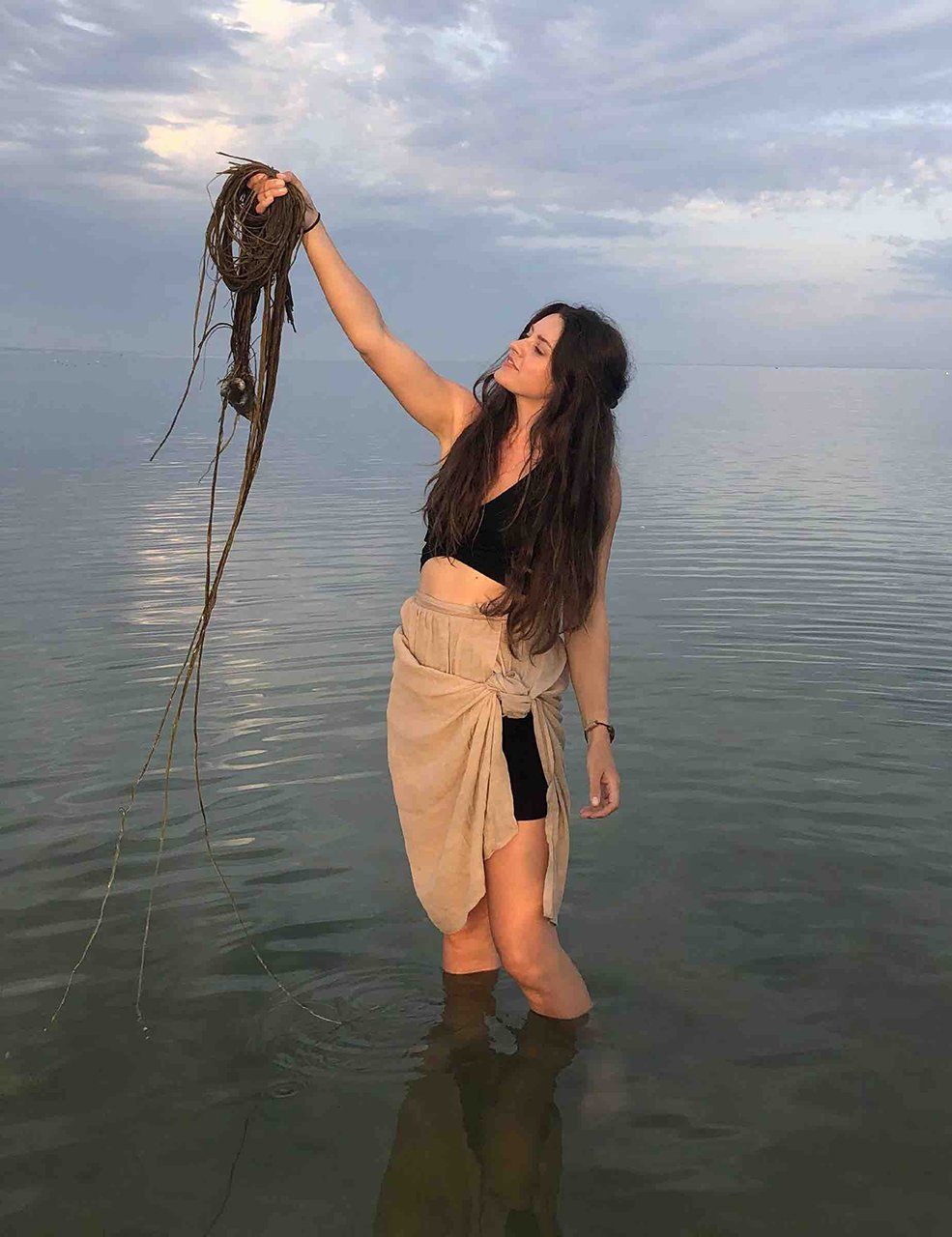
FORAGED BY FERN
Sussex, England
Fern Freud, creator of the gorgeous blog and Instagram account Foraged by Fern, lives in Sussex, England, by the sea, and she wouldn’t have it any other way. “We’ve always lived by the sea,” says Freud, whose mother grew up in Brighton and whose grandfather is the artist Lucien Freud. “Once you live near the sea, you form a deep bond and kind of lose your bearings inland.”
Foraging for wild food began when her father took the family out to forage for mushrooms. “Very irresponsibly,” she laughs. “He basically said, ‘Okay kids, pick everything and we’ll figure it out later.’ Then he came out of the kitchen with a suspicious-looking bowl of mushroom pasta that no one would eat.” Fern, being the oldest, became the de facto safety monitor, which opened the door for her to learn how to forage safely. Foraging became something the family continued to do together. “We gathered snippets by the sea, then we would draw them,” she says. “It was a lovely way to spend time.”
Now, she finds foraging to be a great way to be in the present moment. “When you’re foraging, you have to be incredibly mindful,” she says. “You have to go very slowly, inspect and study every little handful before it goes in your basket. When you are slowing down, you are using all your senses, and it puts you in a slow flow state where you are connecting with nature.”
For Freud, there is something very special about coastal foraging in the rock pools near her home. “It’s like walking into an alien world, with lots of colors and squishy textures,” she says. She runs coastal foraging workshops, rain or shine, on the South Downs in the U.K. They are four hours long, with twelve to fourteen people—“a hunting and gathering tribe,” she says. “It’s kind of a guided tour of the sea.” Freud walks her guests through nearly twenty types of seaweeds and other seafoods. People go off and “forage for bibs and bobs,” she says, and then all gather to examine the seaweed they’ve collected. She builds a campfire on the beach and serves a homemade dark chocolate tart with dulse caramel (a type of seaweed that can taste like miso). The group then puts together a Japanese-style seaweed salad and relaxes on the beach.
Sustainability and environmental stewardship are at the heart of everything she does and foraging is a way to help people regain a connection with nature. “While you are there, the sea splashes around your ankles, the sea creatures get used to your presence,” she says. “You see creatures attached to rocks slowly start to move, and things scuttle across your feet.” In her stretch of coast, there is every kind of seaweed that grows in the U.K., except for one or two. “They are edible, but that doesn’t mean they all taste nice or you can treat it the same way.” For example, sea lettuce is amazing when deep-fried, but it doesn’t pickle well. Pepper dulse is powerful and flavorsome—it’s called the truffle of the sea—and it pickles really well, but turns to mush when fried.
“It’s about learning about every variety,” she says. “It just goes with the territory. If you’re going out to harvest your own ingredients, you have to spend time looking at what’s around and sinking into nature, seeing what’s abundant. And then your meal has all the elements of the day cooked into it.”
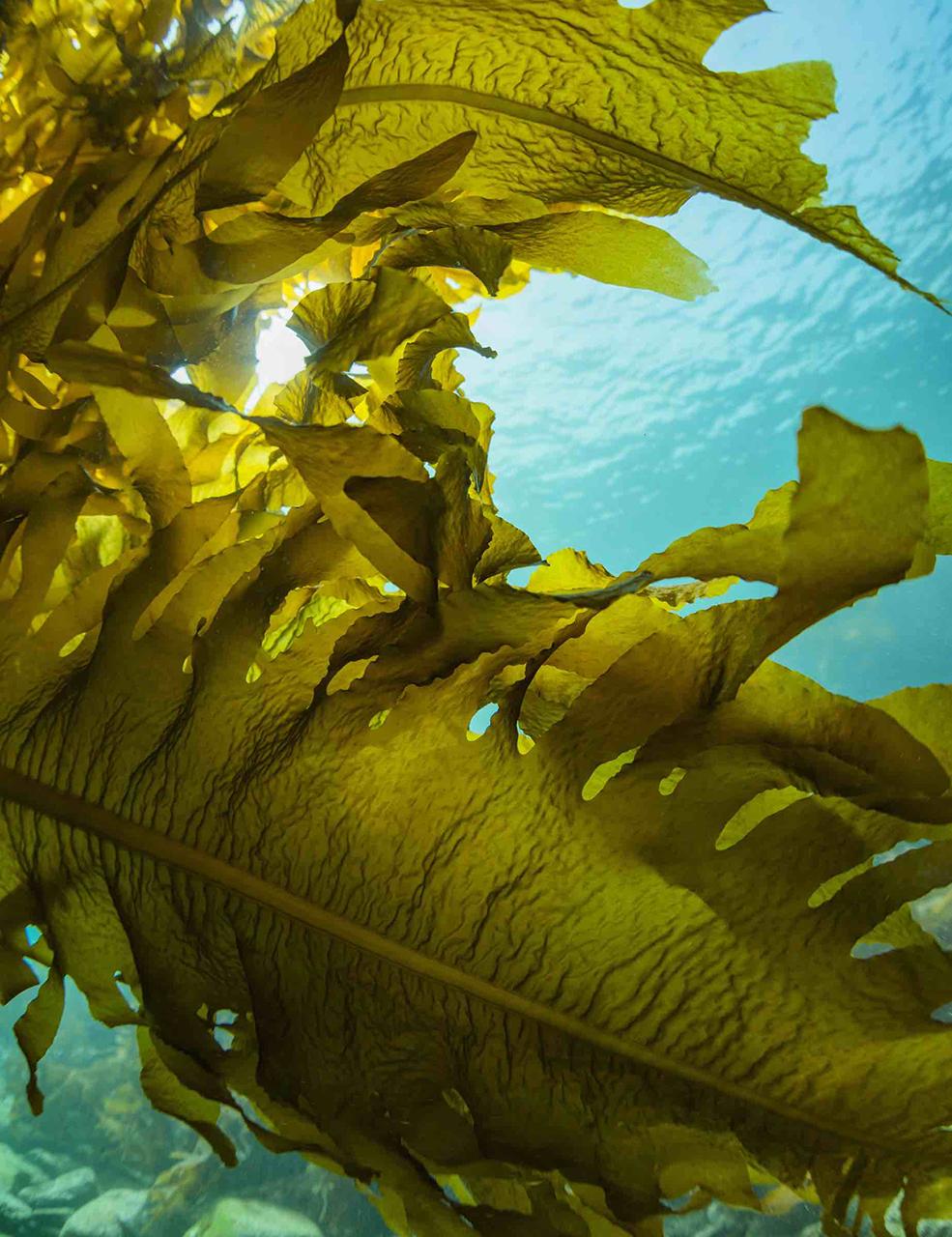
OSEA
Malibu, California
“I love seaweed because it’s a superfood rich in vitamins, nutrients, and minerals,” says Jenefer Palmer, founder and formulator of OSEA, a top natural skin-care brand whose name stands for “ocean, sky, earth, atmosphere.” “It’s all the minerals in seaweed that’s the secret sauce.” OSEA’s seaweeds are sourced from waters around the world, including Patagonia.
Seaweed absorbs a dense concentration of minerals directly from seawater, along with proteins, vitamins, amino acids, and lipids, which are all extremely good for the skin. “Different species of algae can provide a myriad of skin benefits, including anti-aging and moisturization,” says Palmer. It also helps regulate oil production, exfoliates, brightens, and moisturizes dry, dull skin.
The sea seems to float in Palmer’s DNA. She comes from a long line of healers, and her grandmother, Elsa Reushle, was one of the first female chiropractors in the world, with a thriving practice that lasted for decades. She was also a believer in the healing power of the sea.
In her sixth decade on this earth, Reushle decided that swimming would help heal a leg injury and began to swim daily, year round, in the frigid waters of Long Island Sound. Her leg healed. She later went on to found one of the first polar bear swimming clubs in New York. Like her grandmother, Palmer swims outdoors everyday in the ocean or a freshwater spring. And she seems to have passed along the seaweed gene: Her daughter, Melissa, OSEA’s co-founder and CEO, has picked up the reins, and the mother-daughter duo now create products and work together.
Reushle inspired Jenefer, who began to study the healing arts at a young age, focusing on acupressure, shiatsu massage, and cranial touch and polarity therapy. She became a spa director at one of Southern California’s first wellness spas and developed then revolutionary treatments including Ayurvedic body wraps, detox baths, herb-based aromatherapy salt glows, underwater lymphatic massage, and body wraps based on flower essences. She sought to promote wellness through beauty and began to seek out natural skin care products for the spa. Remembering what her grandmother taught her—“Always read the label”—Palmer was shocked when she realized that cheap, synthetic, potentially harmful ingredients were masquerading as healthy skin care. At that point, she decided to create her own and came back to the healing benefits of the sea, collecting seaweed in the cold waters of the Pacific Ocean off the California coast and formulating beautiful, natural products.
One of the first to embrace “clean beauty” before there was a name for it, OSEA was launched in 1996 by the sea in Malibu, leaning into the benefits of organic seaweed along with a targeted blend of active botanicals and essential oils. In 2001, OSEA became the first company to sign the Campaign for Safe Cosmetics. Eventually, more than 1,000 other companies joined them. In 2018, OSEA opened its first skin-care studio in Venice, California, also near the ocean. And in 2020, the company became carbon-neutral-certified.
There is no end to the delights—animal, vegetable, and mineral—that unfold beneath the surface of the sea. In its darkest depths, some still await discovery. Who knows what kind of magical creatures abide there? The underwater world, in all its beauty, sustains life, perhaps in ways we’ve never imagined, not even in our wildest dreams. But one thing is certain: If we tread lightly and be kind to the sea, it will love us back.
